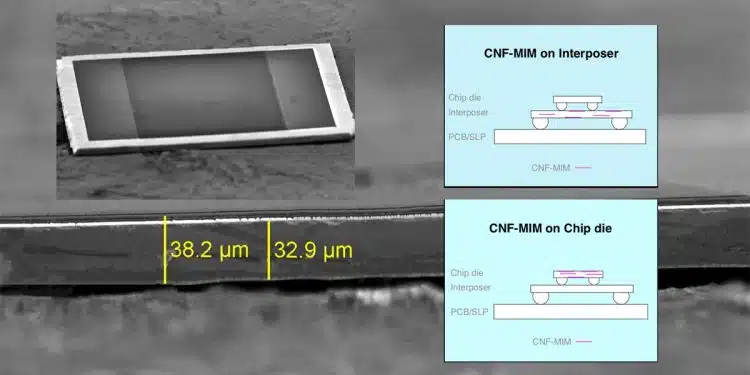Smoltek Nanotech Holding AB (“Smoltek”) announces that the group company Smotek Semi has developed a new technology generation of the company’s carbon nanofiber wafer-based capacitor technology, CNF-MIM.
The new generation, called Gen-Zero, is the foundation for achieving the goal of manufacturing different types of capacitors with very high capacitance density. High capacitance density combined with an extremely small form factor is a requirement for next-generation capacitors for advanced electronic products, such as mobile phones.
During 2023 group company Smoltek Semi has worked on developing a new technology generation of the company’s CNF-MIM capacitors with high volumetric capacitance density. Gen-Zero, as it is called, has recently been completed as part of the collaboration with YAGEO, with Smoltek Semi owning all rights to the result.
“Although we have currently concluded discussions regarding a license and service agreement for the capacitors, YAGEO still has a great interest in our technology and will help us evaluate the results of upcoming Gen-One capacitors”, says Farzan Ghavanini, CTO at Smoltek.
High capacitance in a small area – and the importance of volumetric capacitance density
Smoltek’s carbon nanofiber-based capacitor technology, CNF-MIM, creates high capacitance values by growing extremely thin and tall carbon nanofibers on top of a silicon substrate. With this technology, a very high capacitance is created in a very small area. This is fundamental and demanded from the capacitor manufacturers and their customers worldwide.
“Smoltek’s technology differs from competitors’, which etch deep trenches, or holes, in the silicon substrate. To fairly evaluate the two technologies, one must look at the volumetric capacitance density. This means that you must compare how much capacitance you can get in a given volume in a CNF-MIM capacitor compared to that of the competitors”, Farzan Ghavanini explains.
With the new Gen-Zero capacitors, Smoltek can create a volumetric capacitance density of up to 120 nanofarads per square millimeter and per 1 micrometer of carbon nanofiber. This is comparable to the best capacitors on the market.
The capacitance values in the Gen-Zero capacitors are, however, lower than the competitors. This is due to the fact that Smoltek Semi has not yet optimized the length of the fibers. The carbon nanofibers in Gen-Zero are only a few of micrometers tall. In the next generation, Gen-One, the ambition is to grow longer carbon nanofibers, up to 10 micrometers tall, which is expected to bring the capacitance values on par with the competitors.
“Although we can provide a very high volumetric capacitance density, there is still work to be done to reach our full potential. The ongoing Gen-One project will already during this year prove the strength and potential of our technology to create a world-leading capacitor product”, Farzan Ghavanini concludes.































